What makes a romance novel a romance? Is it simply a story where two people meet, leading to attraction plus lots of conflict and angst, then a happy ending? Pretty much. Yet the nuances matter.
For a romance story to engage readers and leave them satisfied at the end, the romantic arc should include a number of story beats. This is where Romancing the Beat — a foolproof recipe for a romance with all the right ingredients – comes in.
What is the Romancing the Beat Story Structure?
Romancing the Beat is a simple story structure for writing romance by multi-genre author and editor Gwen Hayes.
After explaining her method time after time to clients and other authors, Hayes finally decided to write it all down in her book: Romancing the Beat: Story Structure for Romance Novels. It’s a method that covers all the emotional elements or beats that romance fans love to read.
Who is Romancing the Beat for?
The Romancing the Beat plot structure is described as a recipe, not a rigid formula, so it’s perfect for both plotters and pansters. The “beats” don’t care if you create a detailed outline of your story or not (but it is a lot easier when you use the romance plot template following Hayes’ guide in Plottr!).
What exactly are these all-important beats? Let’s take a closer look:
Plot Points of the Romancing the Beat Structure
There are a total of 20 beats in the Romancing the Beat Plot Structure Template. That may sound like a lot, but they can be broken down into four easy-to-organize phases:
First Phase: Setup
This is where you introduce your protagonists to one another, and it includes the following beats:
Introduce H1: This is your chance to hook the reader by introducing your first hero/heroine. Offer a compelling glimpse into their life, along with a first look at whatever is holding them back from finding true love. Reveal their external goal — maybe a new job, a vacation, or a promotion — and offer a hint about what they need in order to be happy.
Introduce H2: Draw the reader further into the story by introducing the second hero/heroine. Reveal their external goals, needs, and desires, but remember: maintaining a bit of mystery will help hook your audience, too.
Meet Cute: This is when your two main characters first meet. Make the introduction compelling and memorable. (Although the couple usually meets in person, it’s not a requirement. Maybe they meet one another in an online chat room where their true identities are hidden for a time.)
Your H1 and H2 may feel an instant attraction, but more often it’s something closer to dislike. Hint at how perfect they might be for each other, but let the scene show why the timing just isn’t right yet.
No Way 1: This is the argument your first character makes (either internally or outwardly) for why a new relationship just won’t work. Not now, not ever — and especially not with this potential love interest.
Make sure this reason to refuse is authentic and convincing. (Maybe the heroine is thirty-five and the potential love interest is only twenty-three. Or maybe the two of them are from different countries or cultures and the gap just feels too wide to bridge, at first.)
Adhesion: This is a situation that brings the protagonists together to achieve a goal or solve a problem. Whatever the event, it has to be important enough to force the two of them to work together. It’s not something from which they could simply walk away.
This situation raises the stakes while also clearly defining the goals of each of them. Although the romantic leads are still at odds, sparks are beginning to fly between them now.
Second Phase: Falling in Love
No Way 2: The attraction between the protagonists is developing, but at this point the external goal is more important than the relationship. (Maybe the heroine has always dreamed of passing on her bookstore to her daughter one day, but a relationship with the love interest would make it necessary for her to sell it.)
The Inkling of Desire: The attraction is growing and the two leads begin to admit their feelings for each other. Be sure to include scenes that show this growing connection, even in small ways.
Deepening Desire: The characters’ desire for each other continues to grow and they begin revealing glimpses of their true personality to one another.
The external goals still matter, but they are beginning to take a backseat to the relationship. (The bookstore owner may begin searching for a way to pursue the relationship with the love interest without having to sell her bookstore.)
Maybe This Could Work: The attraction continues to grow and they both begin to wonder if maybe the relationship might work out after all. Could this be “the one” they’ve always dreamed of finding?
Midpoint of Love: This is the false high. The characters decide they can have it all — their goals and each other. At this point, the reader should feel convinced that everything will work out.
Third Phase: Retreating from Love
Inkling of Doubt: One or both characters begin to have second thoughts, fearing they may be giving up too much to make the relationship work. They are still committed to each other but begin to pull back. (The couple from different cultures may encounter stiff opposition from their families and decide it’s just all too much.)
Deepening Doubt: Though your lead characters’ intimacy continues, or even grows, doubt begins to show outwardly, too. Show how it affects their connection, and expand on what’s causing it so it feels authentic to the reader.
The Retreat Beat: This is when the characters become more honest with themselves. They express (either to their partner or just to themselves) what it is they most fear about moving forward with the relationship.
Shields Up: All the protagonists’ fears and beliefs begin to come true and they go into self-protection mode. One or both of the characters convince themselves that they don’t deserve love, or knew the relationship was simply too good to be true.
One great way to raise the tension at this point is to have either the hero or heroine meet someone new. By now, the reader should be getting worried that things might not work out after all.
Break Up: This is the darkest moment of your story. The main protagonist gives in to fear and the relationship ends with little chance of reconciliation. As you close out this third phase, the reader is anxious and frustrated that the characters might blow a perfect chance at real love.
Fourth Phase: Fighting for Love
Dark Night of the Soul: This is the “what have I done?” moment. Your protagonist realizes they just gave up something really good. They aren’t sure what to do to fix things — or even if they should try.
For example, the hero who returned to his own country realizes he made a huge mistake but doesn’t have enough money for a return airline ticket.
The protagonists spend a lot of time fretting and remembering the good times. Hint at a way your star couple might find their way back to each other.
Wake Up: The protagonist who initiated the break up decides “I’m an idiot and I need to fix this.” They choose love over fear and doubt, decide what it is they might have to sacrifice to make the relationship work, and start pondering ways to win back their one and only.
The Grand Gesture: This is it: the moment of truth. The protagonist makes a great sacrifice to the love interest, but is it too little too late? Raise tension by having the love interest hesitate to accept the offer. After all, they’ve already been hurt once — they’ll be hesitant to take that risk again.
What Whole-hearted Looks Like: The characters kissed and made up in the last beat. But what does this new life together really look like? Show the reader how both partners have changed, adapted, and grown, and how happy they now are together.
Epilogue: Romance readers often adore a great epilogue. This allows them to spend a little more time with the characters and see how they’re doing six months or a year or more down the road. Show them living their lives in the real world and how they’ve grown as a couple.
If this book is part of a series, end the story with a hook or a foreshadowing of some future difficulty.
How to Use the Romancing the Beat Template in Plottr
Want to write feel-good, paranormal, steamy, or another type of romance? First, download and install Plottr. Get started with a free 30-day trial, or subscribe to a Plottr plan. Next, follow these easy steps:
- Step 1: In the Files section of the Plottr Dashboard, click Create from Template
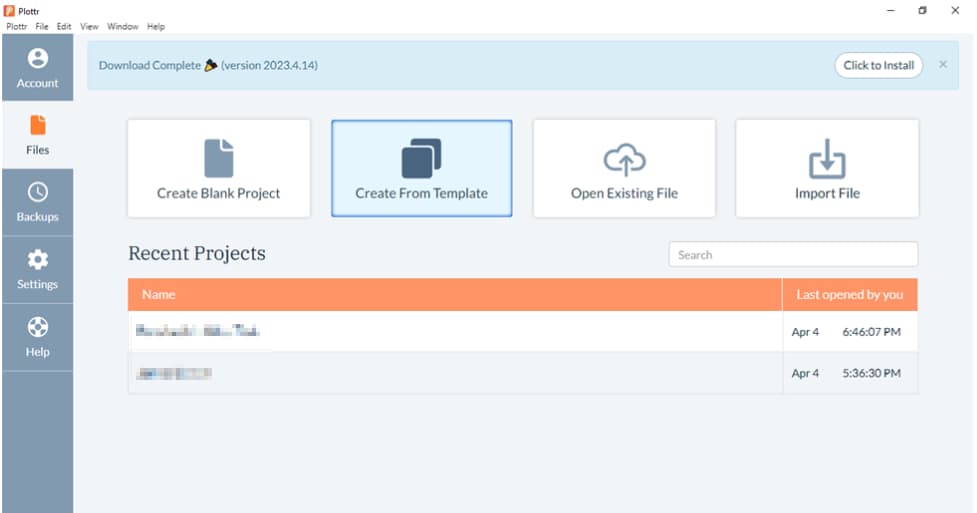
- Step 2: In the list of templates that opens, scroll to Romancing the Beat, select the template, then click Create New Project
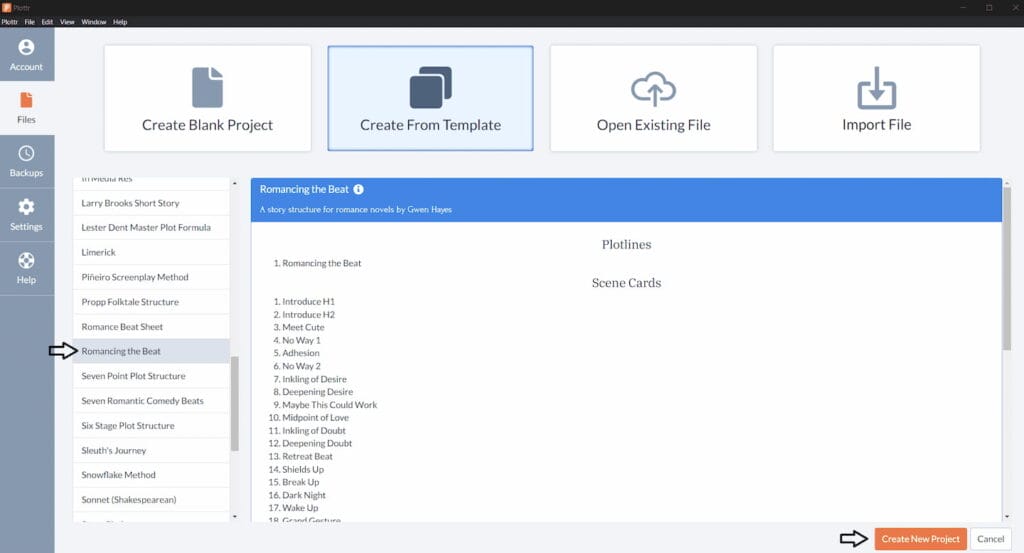
- Step 3: Give your project a name so you can find it easily from your list of recent projects. The template will open in timeline view
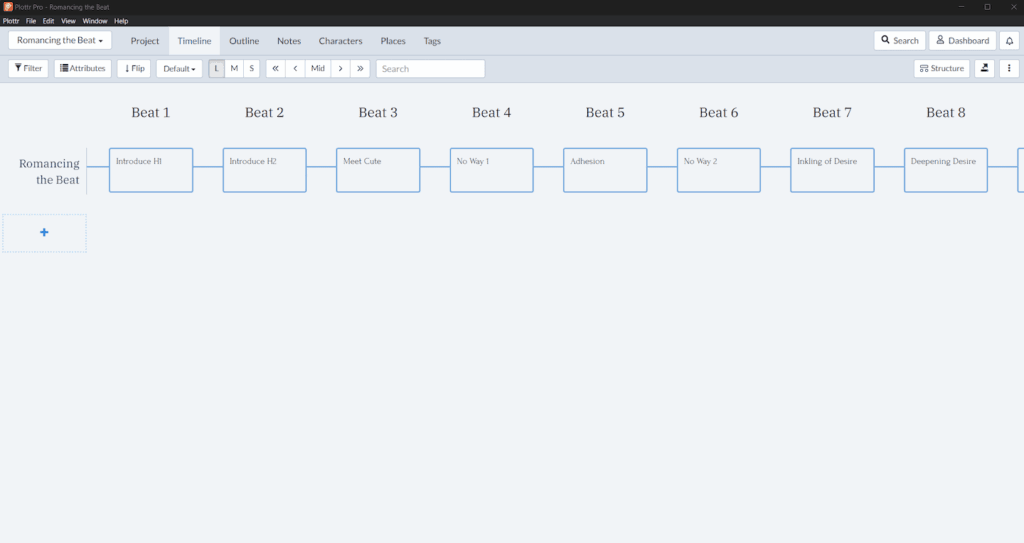
- Step 4: Click on any beat’s scene card to read through a guide for what that beat should cover and begin adding ideas (you can delete the guide text or leave it in as a reminder)
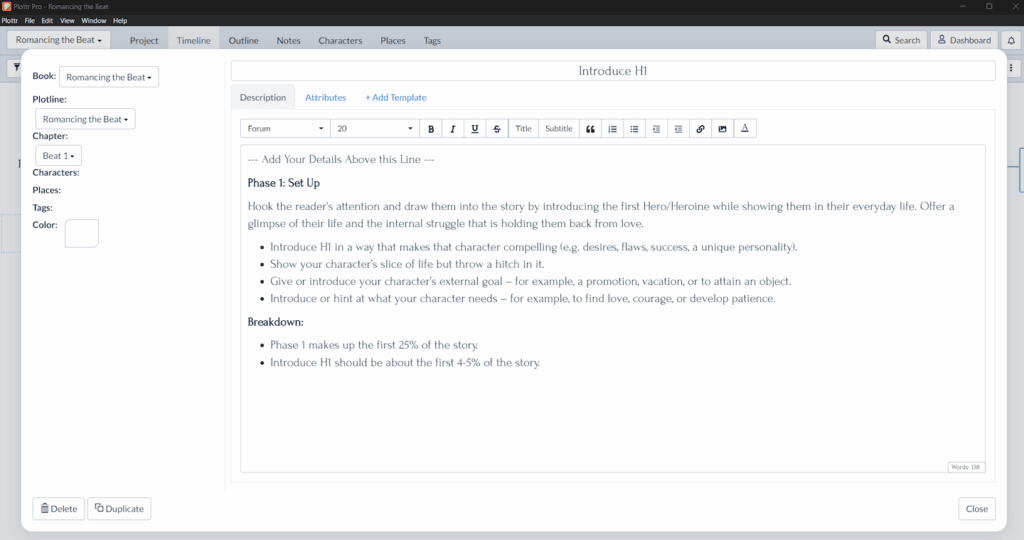
You can combine plot templates in Plottr to create secondary story arcs, subplots, or any sequence of events you want to run parallel to your romantic arc.
Romancing the Beat works well with these other templates:
Ready to Make Readers Swoon?
We hope you enjoyed this step-by-step guide for writing love stories that readers will adore. Sign up for a free trial of Plottr and get to writing. Make sure to share your thoughts on the template in the comments; we’d love to know what you think!
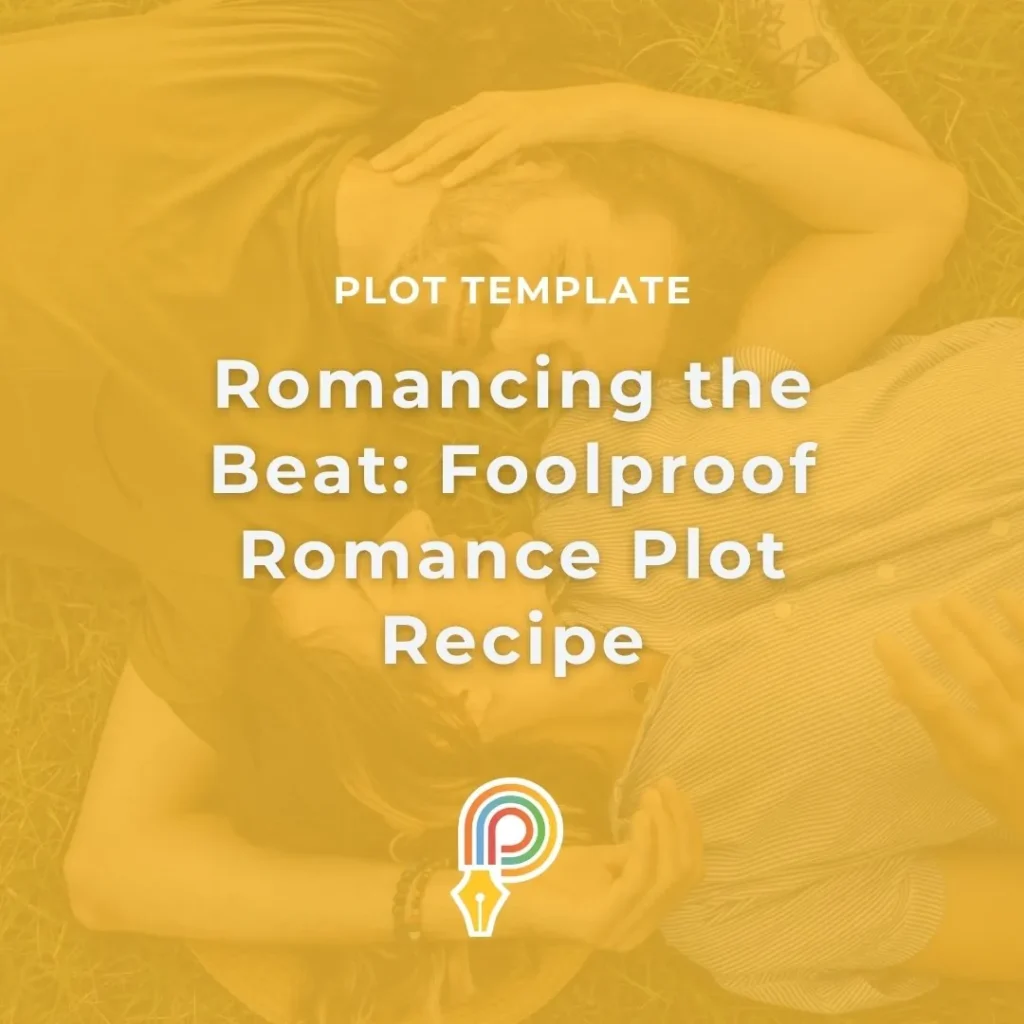

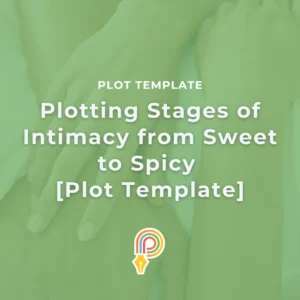
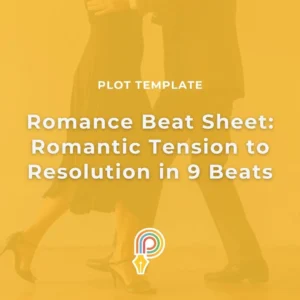
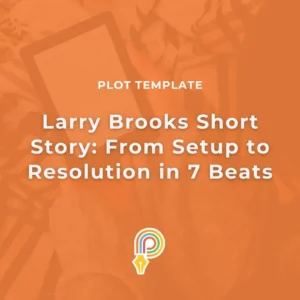

Comments